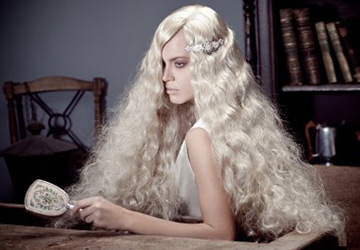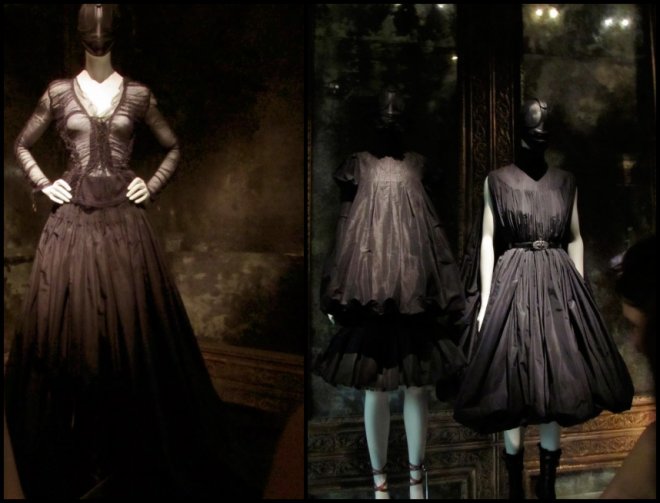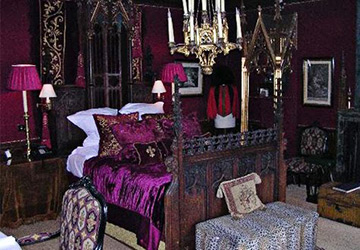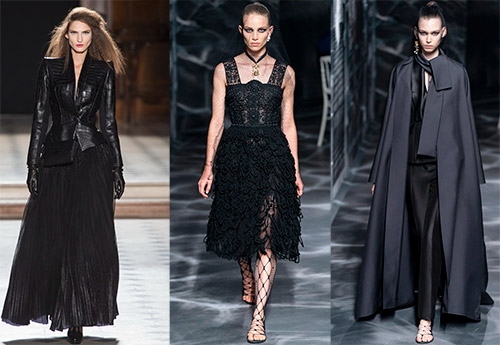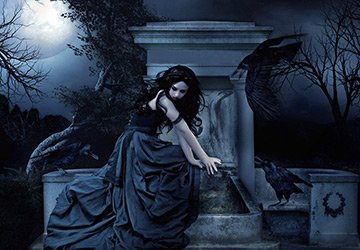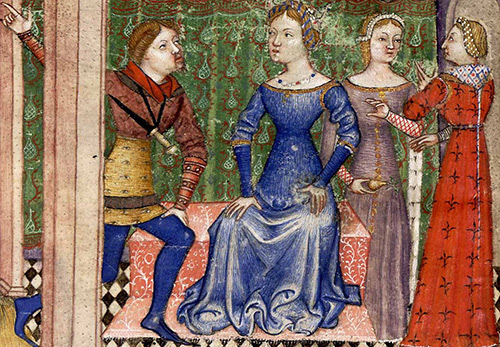Hair care
Gothic hairstyles of the middle ages
Gothic cathedrals are no longer being built.
In the old days, people had convictions; we have,
contemporaries, there are only opinions; and opinions
not enough to create a Gothic temple.
Heinrich Heine
Historical reference
The period of the Middle Ages in the history of Europe lasted from the 5th to the 15th centuries. The history of the Middle Ages itself is divided into two periods - Roman style and Gothic.
Gothic is the period from the 13th to the 15th centuries.
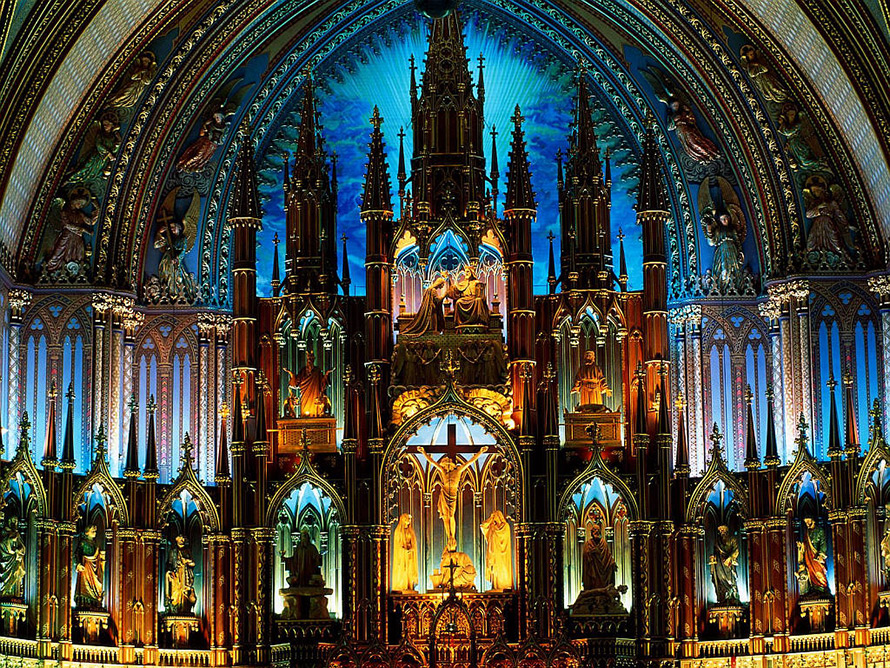
Notre Dame de Paris
At this time, Romanesque defensive architecture (castles, city walls) was replaced by Gothic architecture. At this time, it was no longer necessary to keep the defense. States have grown, feudal fragmentation has disappeared. Feudal lords (landowners) of one state now did not attack each other. From now on, only states in which all power was concentrated in the hands of the monarch were at enmity with each other and fought for the land.
During the Gothic period, cities also began to play an important role, they developed. Crafts and trade are developing. Town halls, hospitals, markets and, of course, cathedrals are being built in cities. Majestic, gigantic in size, with spiers extending into the sky itself. Cathedrals are both gloomy and light, cathedrals that guard the creepy figures of chimeras and gargoyles (by the way, they also had a purely practical function - they covered the gutters, making their appearance more aesthetic). Cathedrals with many symbols, both Christian and astrological. Cathedrals with huge stained-glass windows, as opposed to Romanesque churches - with small loopholes.
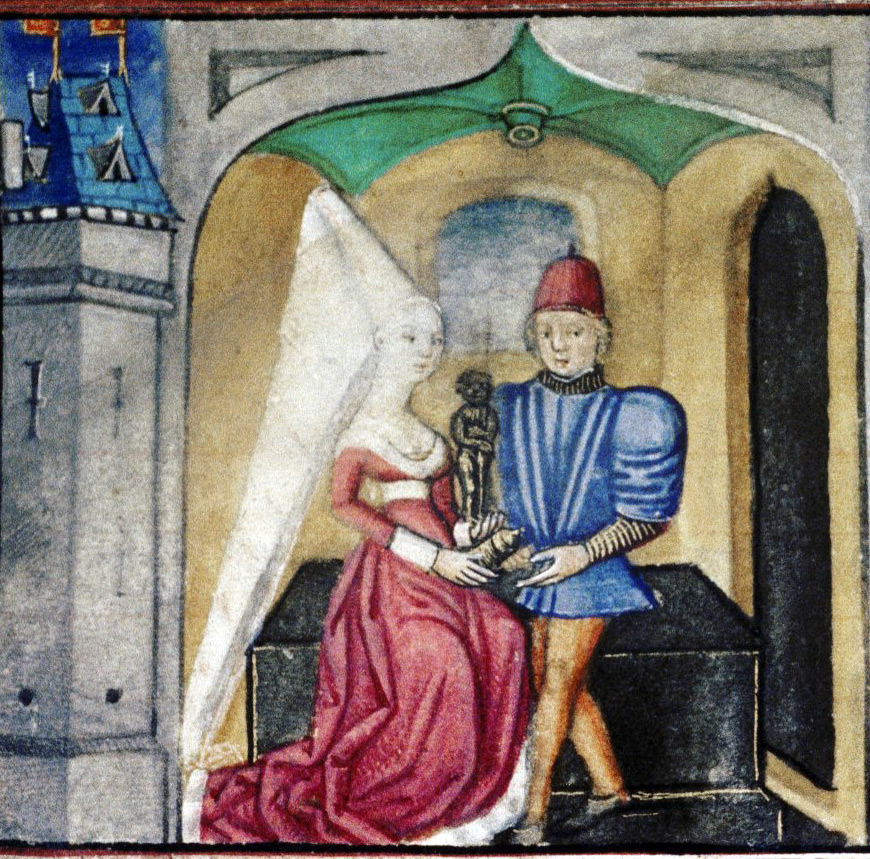
Medusa hands Jason a golden statue. Miniature of the 15th century
Here you can see a female annen headdress with a veil and a short haircut for men plus a headpiece.
Gothic architecture originated in France and from there it spreads throughout Europe - England, Germany and, of course, Prague (Czech Republic).
Exactly the same elongated and pointed as the cathedrals, were the clothes of the inhabitants of medieval Gothic Europe. They wore elongated, pointed cap hats, shoes with pointed and elongated toes, dresses that lengthen the figure. But at the same time, the colors of the clothes, as before, remained very bright - blue, yellow, red.
Men's hairstyles from the Gothic period were not much different from earlier Romanesque hairstyles.
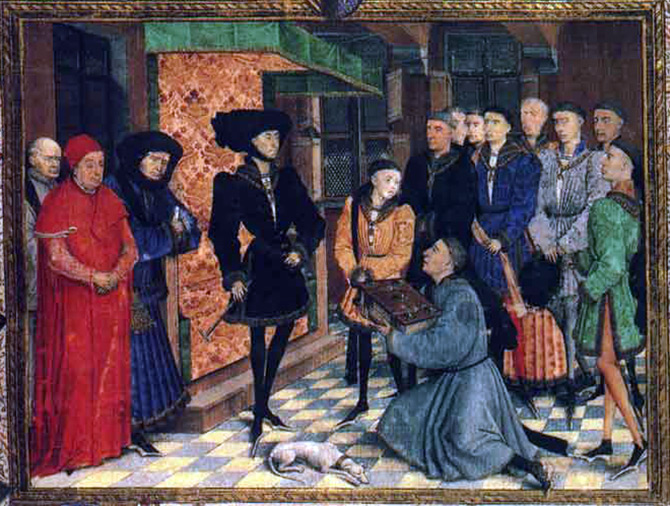
Gennegaus Chronicles. 1448. Royal Library. Brussels.
Men's hairstyles and hats.
So, among men, the “peisan” haircut was still popular - curled hair and with long thick bangs covering the entire forehead.
The nobility could wear longer and also curled hair. Also, men could decorate their hairstyles with gold hoops. The townspeople very often wore various hats - caps, hats, men's caps. But, unlike earlier times, in the XIV - XV centuries. hats were distributed by class. For example, in France scientists and theologians wore black caps, doctors wore hats with brims and cloth headphones tied to them, which covered their ears. Another feature of medieval doctors was the presence of a mask in the form of a long bird's beak. Such a face mask was worn during plague epidemics. The long "beak" contained rags soaked in various herbal decoctions, which was believed to protect against infection. Notaries and judges wore beaver hats. The clergy are mitras and tiaras.
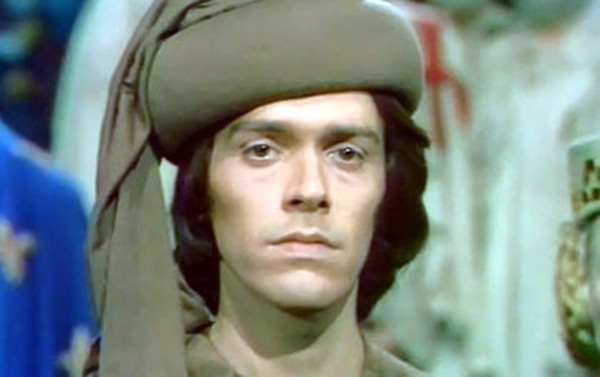
A still from the movie "Cursed Kings". 1972
The peasants wore haircuts "in a circle", "under brackets." Men of all classes wore beards and mustaches.
The concept of beauty has also changed little since the Romanesque period. So, women still shaved their hair over their foreheads, plucked out their eyebrows and eyelashes, used blush and bright lipstick.
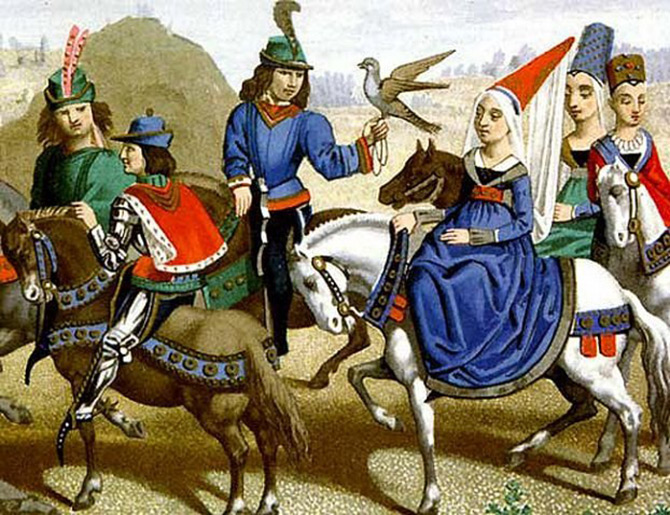
Medieval miniature.
Annen in the foreground.
Women, as before, were forced to hide their hair under headdresses. The only thing, now they were releasing from under the headdress on the forehead several strands, woven into a pigtail, and laid in a semicircle.
"Knightly" braids (long and wide - the width of the palm) are out of fashion. They begin to wear two braids, which are twisted over the ears in the form of "snails". A template decoration was worn on such braids - decoration in the form of a convex hemisphere or a shield. Such an ornament, a template, was attached to a hoop, which was worn on the head. Gold hairnets could be another way to decorate your hair.
As for the headdresses, they became very tall during the Gothic period and often took on very bizarre shapes.
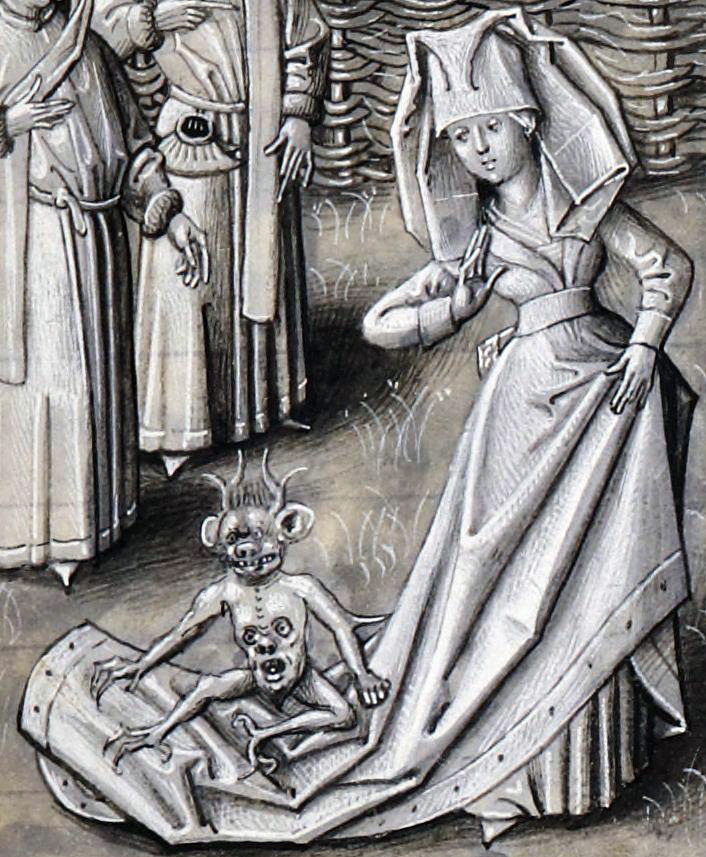
Miniature. France. XV century
The headdress looks like a "horned" cap.
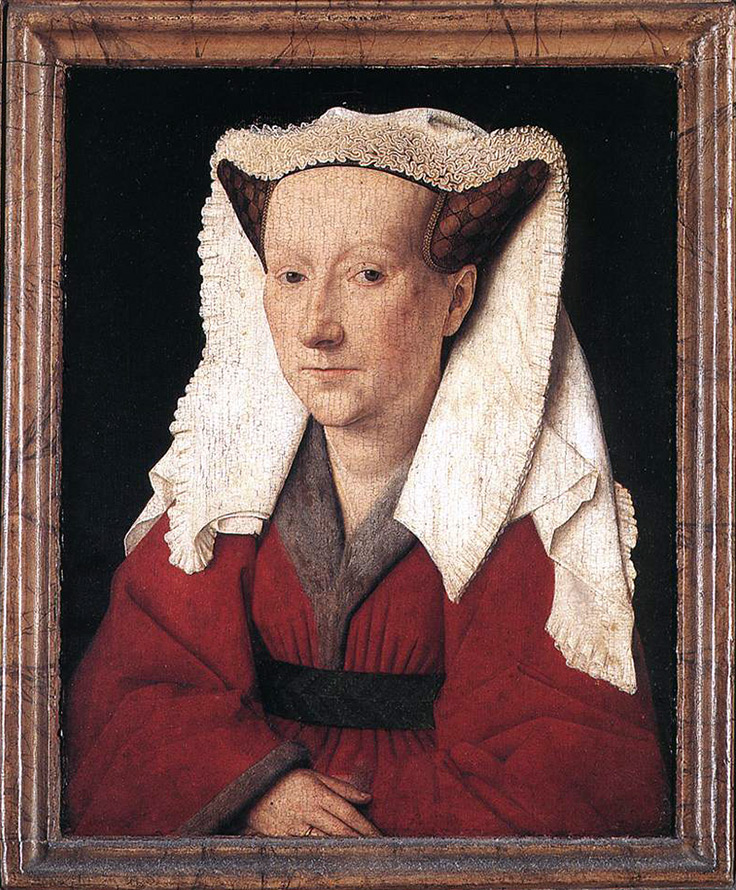
Jan van Eyck, Portrait of Margaret Van Eyck, 1439
"Horned" cap
So, such a headdress as a gorge was popular. A gorge is a headdress in the form of a pipe or cylinder, whose edges widened downward, and at the back, at the back of the head, there was a small incision.
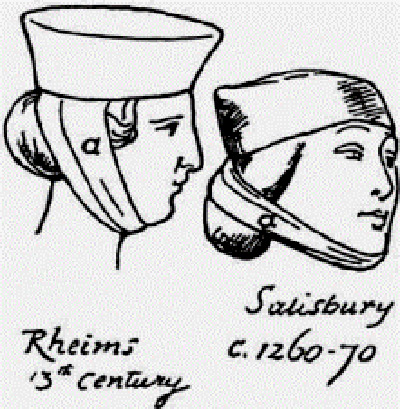
Bottom kerchief barbet and hat.
Annen was worn. A headdress made of fabric, which had the shape of a cone and was made on a wire or cardboard base. Long transparent veils were worn with such a headdress. It is believed that the fashion for Annen was introduced by Queen Elizabeth of Bavaria. Annen did not like the church very much, seeing in him a caricature of Gothic cathedrals. But the ladies with enviable persistence continued to wear, despite all the prohibitions, annenas, which each time grew more and more in height.
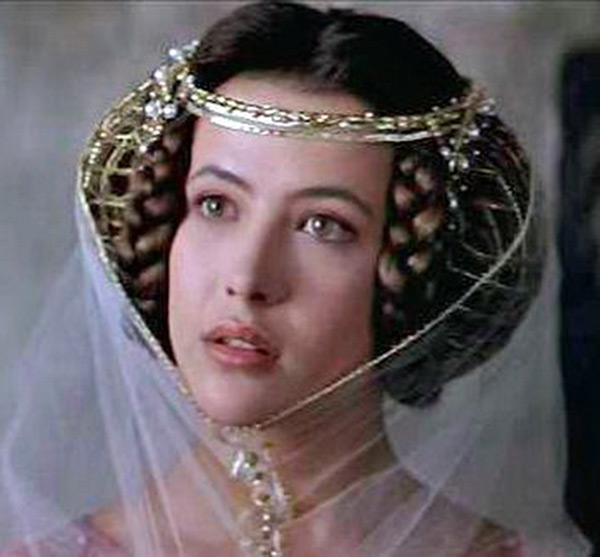
Still from the film.
Hairstyle and decoration template.
Of the headdresses, they also wore a barbet - a kerchief, over which they put on bedspreads or, in winter, hats. Omuse is a scarf, the ends of which were tied around the neck, and it itself resembled a hood in shape. A variety of caps were also worn. For example, a "horned" cap, which featured gilded nets on the ears, or various high caps.
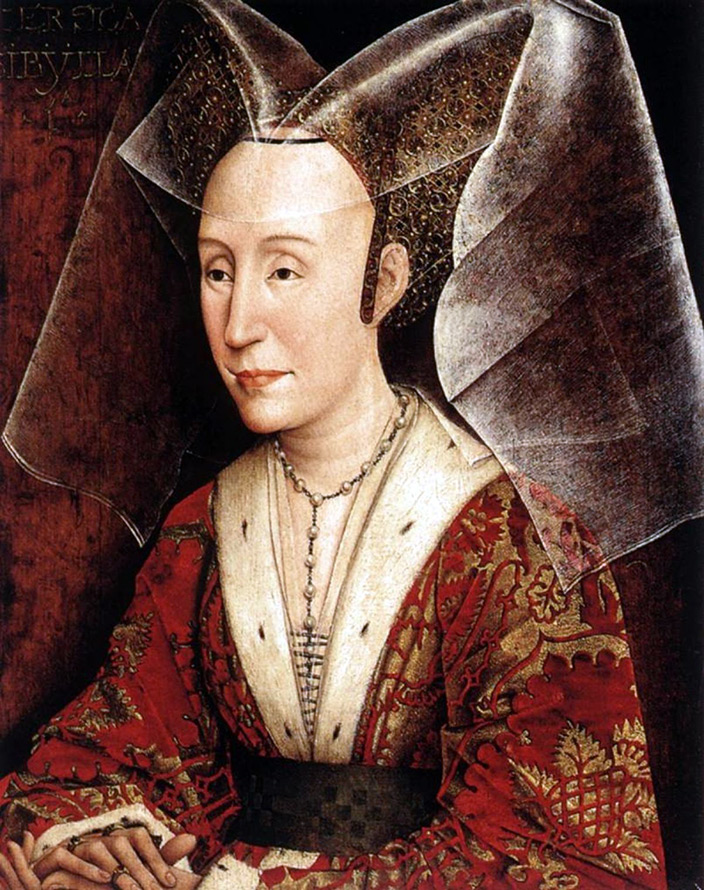
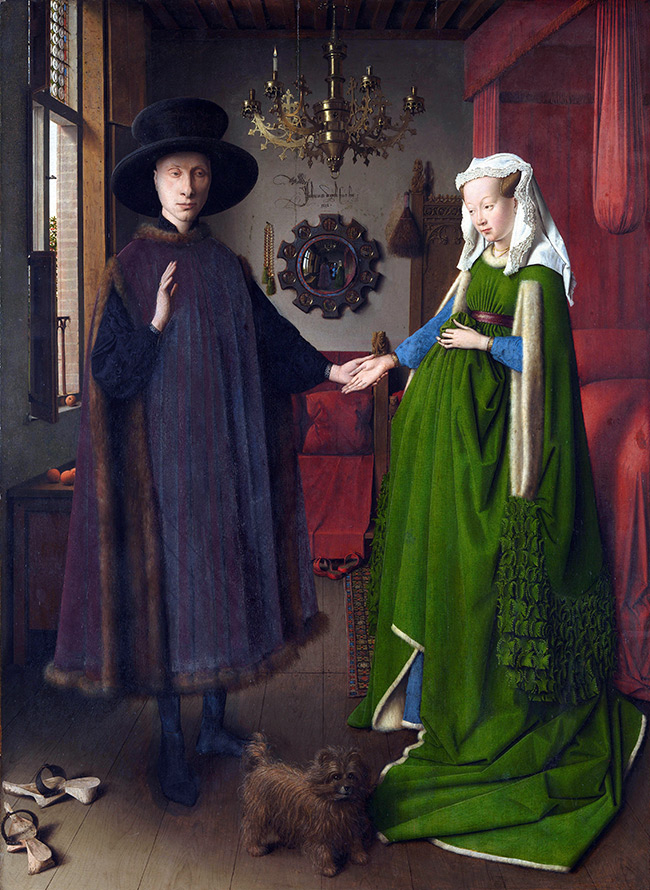
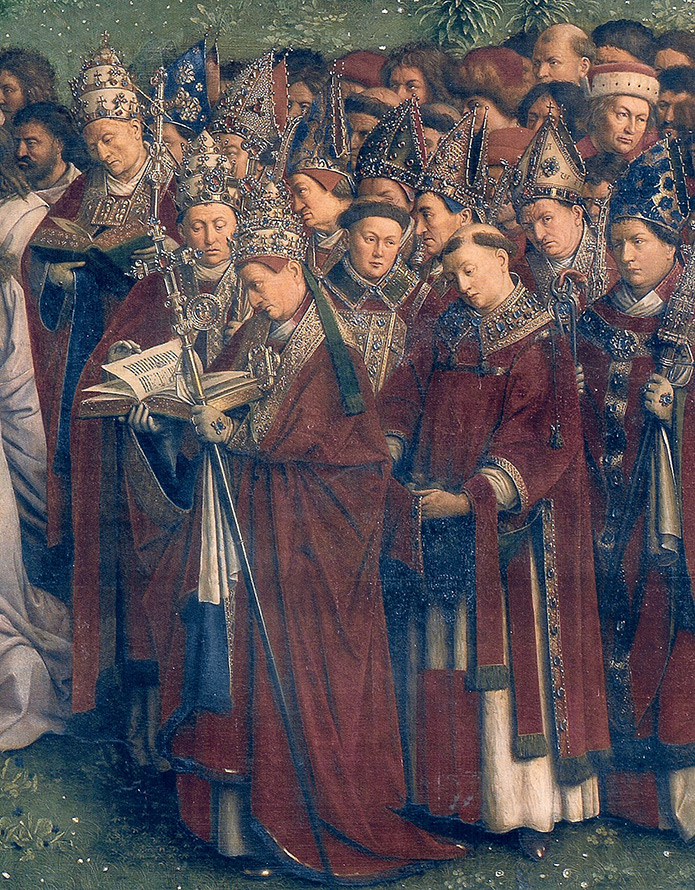
Veronica D.
Comments and Reviews
Add a comment
Rating news
Shades of clothing that make women look younger
What shades of hair make women younger: rules and photos
Funny wedding dresses - photos and ideas
12 most expensive down jackets for the winter
How to look 25 at 40: tips from supermodels
Beautiful schoolgirls
Anti-aging haircuts and hairstyles for women
Fashionable skirts for autumn and winter
Fashionable women's trousers for the cold season
Fashionable and stylish sandals for summer 2024
Spring-summer 2024
 Fashionable dresses and tops with thin spaghetti straps
Fashionable dresses and tops with thin spaghetti straps
 Bandana tops: how to wear stylishly and beautifully
Bandana tops: how to wear stylishly and beautifully
 How to put together the perfect men's wardrobe for the summer
How to put together the perfect men's wardrobe for the summer
 Fashionable shorts for spring-summer 2024
Fashionable shorts for spring-summer 2024
 Fashionable skirts for spring-summer 2024: a guide to online shopping
Fashionable skirts for spring-summer 2024: a guide to online shopping
 The most fashionable dresses spring-summer 2024: styles and colors
The most fashionable dresses spring-summer 2024: styles and colors
 Fashionable total look 2024: ideas of images and trends
Fashionable total look 2024: ideas of images and trends
